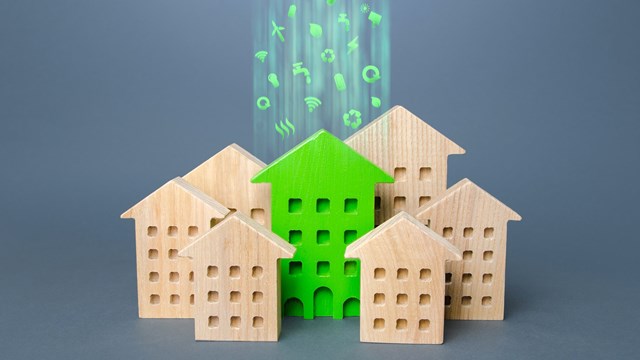The Council of New York Cooperatives and Condominiums (CNYC) has announced the release of a new planning tool to help boards plan Local Law 97 (LL97) projects. The tool is a user-friendly, dynamic, Excel-based spreadsheet that enables boards to consider how the combination and layering of various decarbonization projects will impact their budgets, carbon footprint, energy use and penalty mitigation over time.
According to Rebbeca Poole, Director of Membership and Communications for the Council, “The ease of use and visual end product gives boards an opportunity to easily weigh the pros and cons of different decarbonization pathways on a broad level, and to share their information with their shareholders or unit owners.”
How Does It Work?
To use the CNYC’s tool, a board member or other designated user enters basic building information from an audit or benchmarking report, such as their space type, gross floor area, and electrical, gas, or oil use. Once this data is entered, the tool provides a base overview of the building’s current position in terms of carbon emissions and LL97 compliance.
The next step is to enter any decarbonization jobs that have been proposed. “These can come from a variety of sources,” says Poole, “but the most common are the building’s energy audits and individual proposals submitted by contractors.”
For the final step, users can employ a toggle feature to indicate whether or not to include each project in the pathway; if they are opting to undertake a given project, there is a place where they can enter the projected completion year for that project. The tool uses that data and produces both numeric and graphic representation of how the chosen pathway will impact the property.
The Benefits
Local Law 97 has inundated boards and their managers with information, new solutions, and advice on almost a weekly basis. The CNYC’s tool creates order, and provides users with the ability to examine why projects are being recommended in that certain order, enabling them to create a timeline for undertaking work that fits into their capital plan and their financial reality.
“This tool will help users visualize and develop pragmatic plans for dealing with LL97 and decarbonization,” says Poole. “The order of implementation is important for how their projects will work. New technology is still developing. Implementing large projects now, when efficiency measures can suffice in most instances, will likely cost buildings well more than is necessary over time. Staying ahead of planning and undertaking projects with short payback periods is key to avoiding penalties and reducing energy use. The tool helps envision how this approach to LL97 can work.”
The Developers
The CNYC’s tool was developed by Manhattan-based JB&B Deep Carbon Reduction Group. The engineers responsible for its development are JB&B Director Molly Dee-Ramasamy and project manager Zhen Ren. According to a company rep, “We recognize that decarbonization is the future, and we strive to stay at the forefront, leading and helping in practical and financially responsible ways.” JB&B engineers work with a varied group of building sector stakeholders, including the public and private organizations.
For additional information, contact Rebbeca Poole at the New York Council of Co-ops and Condos at poole@cnyc.coop










Leave a Comment